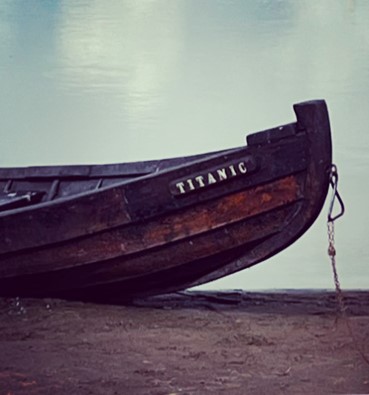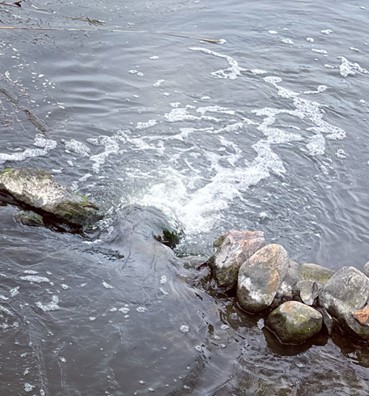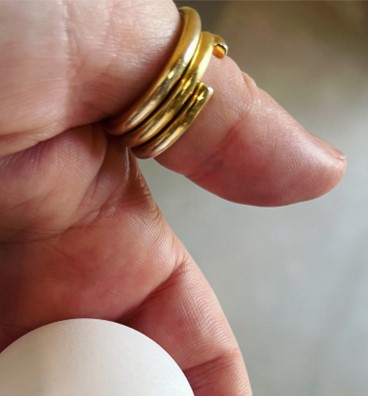

Abstract
While there might be little novelty in acknowledging the challenges presented in the documentation of live performance practice, or the close relationship between documentation and dissemination in the context of artistic research, there is nevertheless still work to be done on the dramaturgy of the document. The potential doubling afforded by the originary referent and its digital twin evokes the concept of quantum entanglement, forcing the artistic researcher to acknowledge the cleaving between the source and its document. Starting from our own ageing bodies and their digital doubles, we will explore Albert Einstein’s (1971) idea of “spooky action at a distance”, alongside Freya Vass-Rhee’s (2015) concept of “boundary objects” in “Distributed Dramaturgies;” objects which are not confined to or defined by a singular situation or group but instead take shape and are reshaped when moving through many different situations and groups.
Perhaps it is self-evident to assert that what is offered here inevitably shift from the presentation we made at CARPA8. In that work-share opportunity we began from the explicit presence of our bodies and the bodies of those joining us in the space. This writing has no such bodies to draw from. It is offered as an artefact of a moment of embodied sharing, and in so doing it is an act of transformation. The presentation we offered in the space in Helsinki spoke from bodies; the bodies of the presenters. It spoke to bodies; the bodies of those in attendance. It also spoke of bodies; bodies imagined and thus absent. In that room, we were sharing a speculative approach to the dramaturgical potential of emerging Volumetric Capturing technology, but doing so in full acknowledgement that the studio that would house the experiments was still being built. Thus, our bodies and the bodies of those sharing the room with us became all the more important, as they were the only certainty we had to work with. We were considering the varied potentials of bodies in relation to 360-degree documentation, and doing so in recognition that we were asking our audience to join us in an imaginative leap (Olufemi 2021). We were considering both the generative and documentary potential of a technology still in its relative infancy. Actually, while the technology itself is suitably advanced, it is the potential for live-performance that is germinal.
In “Being Alive: Essays on Movement, Knowledge and Description” Tim Ingold explores a world perceived through the feet. In such an “orientation towards the ground” Ingold asks “What new terrains would be opened up?” (Ingold 2011, 45). He answers in part with a literally “grounded” approach: “For it is surely through our feet, in contact with the ground (albeit mediated by footwear), that we are most fundamentally and continually ‘in touch’ with our surroundings” (Ibid.).


The / Glide
A shared experience
These are questions for ghosts, because we raised too many fleshy questions:
What are you looking at? What do you see? What are you missing? What are you imagining? What do you want to see? What can you see? We want you to know that we care what you feel. We want you to know that we care what you think. We want you to stop. We want you to be patient. We want you to have low expectations. We want you to demand complexity. We want you to not settle for less. Is this too much to ask? Did you see that? Did you notice the smile as it crossed her lips?
- What happens in the gaps between bodies?
- What is the “work to be (un)done” by dramaturgy?
- What is the heartache of your practice?
- How can we become invisible?
Who are we?
What can we do?
What do we want to be able to do?
What do we want to try?
What have we got?
What can we bring?
How can we fly?
Phantom limbs:
What “rules” of dramaturgy are spoken, and what are unspoken? What knowledge is whispered in corridors? What will we hear when we listen at closed doors?
………………………………………………………………
Where ghosts live:
As we slide away from the symposium, into somewhere / something else: what will we remember? What will we endeavour to forget? What has changed us?
What falls through the fingers?
The ghosts:
As I travel up the leg from the feet, I hit an interruption. The hip joints, which have a cup and a head, drink in the ageing 50-year-old body. We wonder about how the phases of gait cycle shift through use, we ask questions of our stance, toe-off, swing heel strike, stride, and step length. These articulations grumble in the mornings.
A joint is also known as an articulation: an articulation of a location where two or more bones meet. An utterance in a space. This paper is an articular surface of both fibrous and creaking materials, a connection made between bones, between ideas that continually escape us. We feel for our skull sutures, tracing their fixed stitching which lets in no light whatsoever. We try to remember this in those moments in which we become all too aware of a lack of mobility in our thinking.
The problem of explication finding its solution through action.


The / Slide
A shared experience
How to “know” dramaturgical things:
How do you know this space?
What is missed in translation?
How do you know you have reached the ending?
1. Embodied / Fleshly
Your body has met the world, and in so doing it knows it.
We touched the water to feel the temperature.
We compared the red of berries.
We held on tight at the edges.
We retraced our footsteps.
2. Cognition / Thinkly
Through cognitive processes, you know something because it has troubled the meat inside your skull.
We discussed the visibility of invisibility, and then haunted ourselves.
3. Process / Creationally
Process is always an act of creation, and this can help you know something through encounter.
We imagined how a change in weather could change the space and shift bodies at a cellular level.
Grey areas:
Feel free to articulate any experiences of “grey areas.”
Would you like an ending?
Task:
Practice how to fly today.
Ask the group for advice.
Ask the spooky house for advice.
Ask strangers for advice.
Ask the sky for advice.
……………………………………………………………
When I think of goodbyes, and the ways in which you have changed me, I suddenly think of Robert Montgomery’s text work The People You Love (2010–2022), which uses solar power and LED:
THE PEOPLE YOU LOVE
BECOME GHOSTS INSIDE
OF YOU AND LIKE THIS
YOU KEEP THEM ALIVE
Thank you for haunting me.


References
Einstein, Albert. 1971. “Correspondence between Albert Einstein and Max and Hedwig Born from 1916 to 1955 with commentaries by Max Born.” In The Born – Einstein Letters, edited by Max Born et al, 52. Basingstoke: Palgrave Macmillan.
Ingold, Tim. 2011. Being Alive: Essays on Movement, Knowledge and Description. London: Routledge.
Olufemi, Lola. 2021. Experiments in Imagining Otherwise. United Kingdom: Hajar Press.
Vass-Rhee, Freya. 2015. “Distributed Dramaturgies: Navigating with Boundary Objects.” In Dance Dramaturgy: Modes of Agency, Awareness and Engagement, edited by Phil Hansen and Darcey Callison, 87–105. Basingstoke: Palgrave Macmillan. doi.org/10.1057/9781137373229_5.
Contributors
Joanne ‘Bob’ Whalley
Joanne ‘Bob’ Whalley is an artist, dramaturg, and acupuncturist, whose focusses on radical kinship and politics of care. She is Director of Doctoral Training and Development at University of the Arts London, UK. Her book “Between Us: Audiences, Affect and the In-Between” (Palgrave Macmillan, 2017) celebrates spaces which cause an affecting, and bodies affected.
Lee Miller
Lee Miller is the lead for the Centre for Blended Realities and Professor of Performance at Falmouth University, UK. As a practitioner-scholar, Lee’s research lies in the space between bodies in performance, with a specific focus on the affective gap between audience and performer. His recent research considers the role of the digital avatar in performance exchanges.